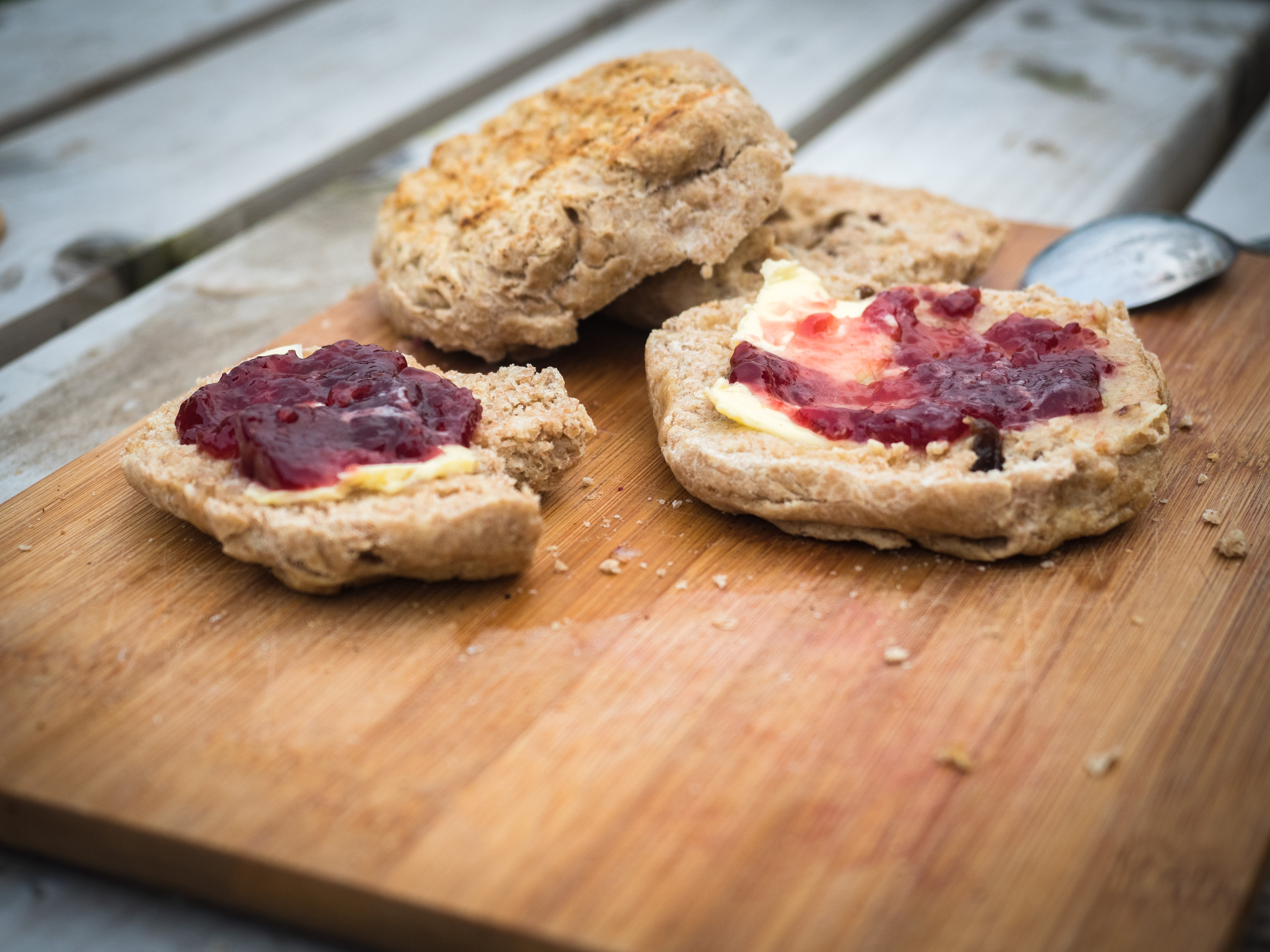
Make Your Own Campfire Bannocks
‘Bannock’ is a Scottish term for a flat loaf of bread made from a simple dough, and cooked on a skillet or griddle. It’s a traditional recipe that is easy to make and lends itself well to outdoor cooking — Bake-Off it might not be, but come on, who doesn’t love the smell and taste of freshly baked bread?! In the past, bannocks were cooked on a ‘bannock stane’ — a large, flat stone placed in an open fire to heat up — and different varieties exist, like the raisin-heavy Selkirk bannock that counted Queen Victoria among its fans.
Kids will love getting hands-on with the dough-making, and unlike your more usual loaf of bread there’s no time spent waiting for dough to rise or slowly baking in an oven, so this simple recipe gives quick results that fit well with kids’ attention spans, and can be done while the rest of your meal is cooking. The texture is crumbly and fairly light, a little like a savoury scone, but in this case the wholemeal flavour gives a nuttier flavour and a slightly rougher texture along with the added health benefits of wholemeal. It’s fantastic for soaking up butter, and even better at absorbing flavoursome sauces left over at the bottom of a pan. Yum.
It’s versatile, too. Straight from the skillet, it’s great with butter or honey. Since the fire’s on anyway, a couple of eggs cracked in right after the bannock is done give the makings of a great breakfast, or it can be served up with a little whipped cream and some fruit or jam to make a filling campfire dessert.
However you choose to use them, there’s no denying the extra fun of cooking simple food over an open fire — it’s an outdoor activity that provides its own heat, and all the family can get involved. Once the dough is made, the trick is to use a thick-bottomed pan like a cast-iron skillet if you possibly can. The thick iron heats up slowly and stays hot for a long time, transferring the heat evenly across its surface. It’s also important not to place the skillet over the hottest part of the fire, as this will burn the bottom of the bannock before it’s cooked through. Instead, an area of glowing embers towards the edge of your fire will likely provide the best source of moderate heat, allowing your bannock to cook nicely for around 10 minutes on each side, leaving a soft centre with golden crusts on top and bottom.
My favourite way to serve is simply sliced open and spread with a generous amount of butter! You might like to try your favourite spread — perhaps a little peanut butter or nutella if all this work has got you craving calories. Or, for a more continental feel, try them dipped in a small bowl of olive oil and then balsamic vinegar, which is perfect with a salad.
The Recipe
Using cups to measure keeps things a little simpler than using a scale when you’re away from home. One cup of flour is equal to 120g of flour, or a volume of 240ml, so your average tea mug will work just fine as a measuring cup.
Serves 4
Ingredients
- 1 cup plain white flour
- 1 cup plain wholemeal flour
- 2 Tsp baking powder
- 3 Tbsp butter or olive oil, plus extra for the pan
- 1 Tsp salt
- 150-200ml water
- ½ cup raisins/sultanas (optional)
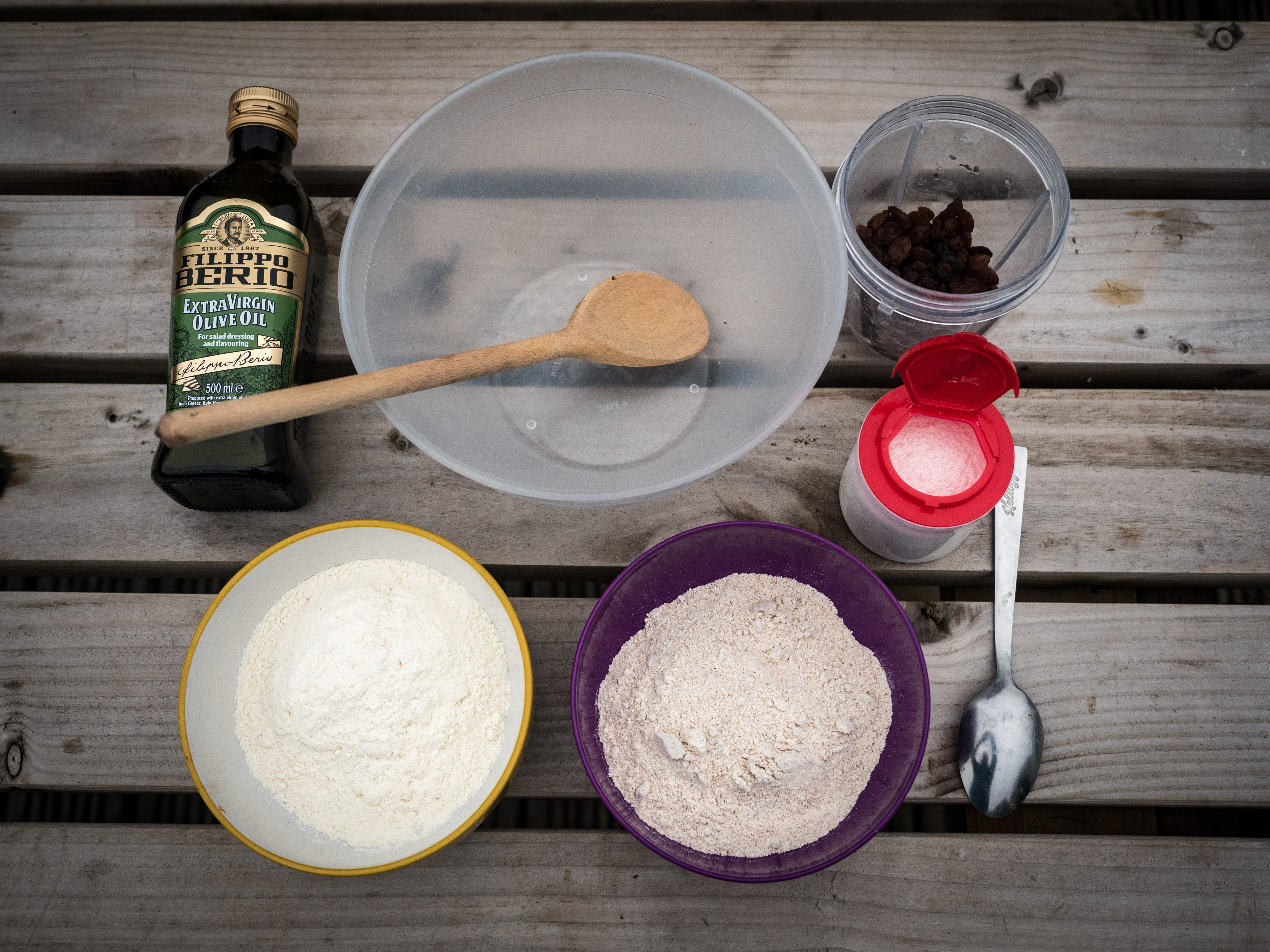
Method
- Add all the dry ingredients to a large bowl and mix together, then add the butter/olive oil.
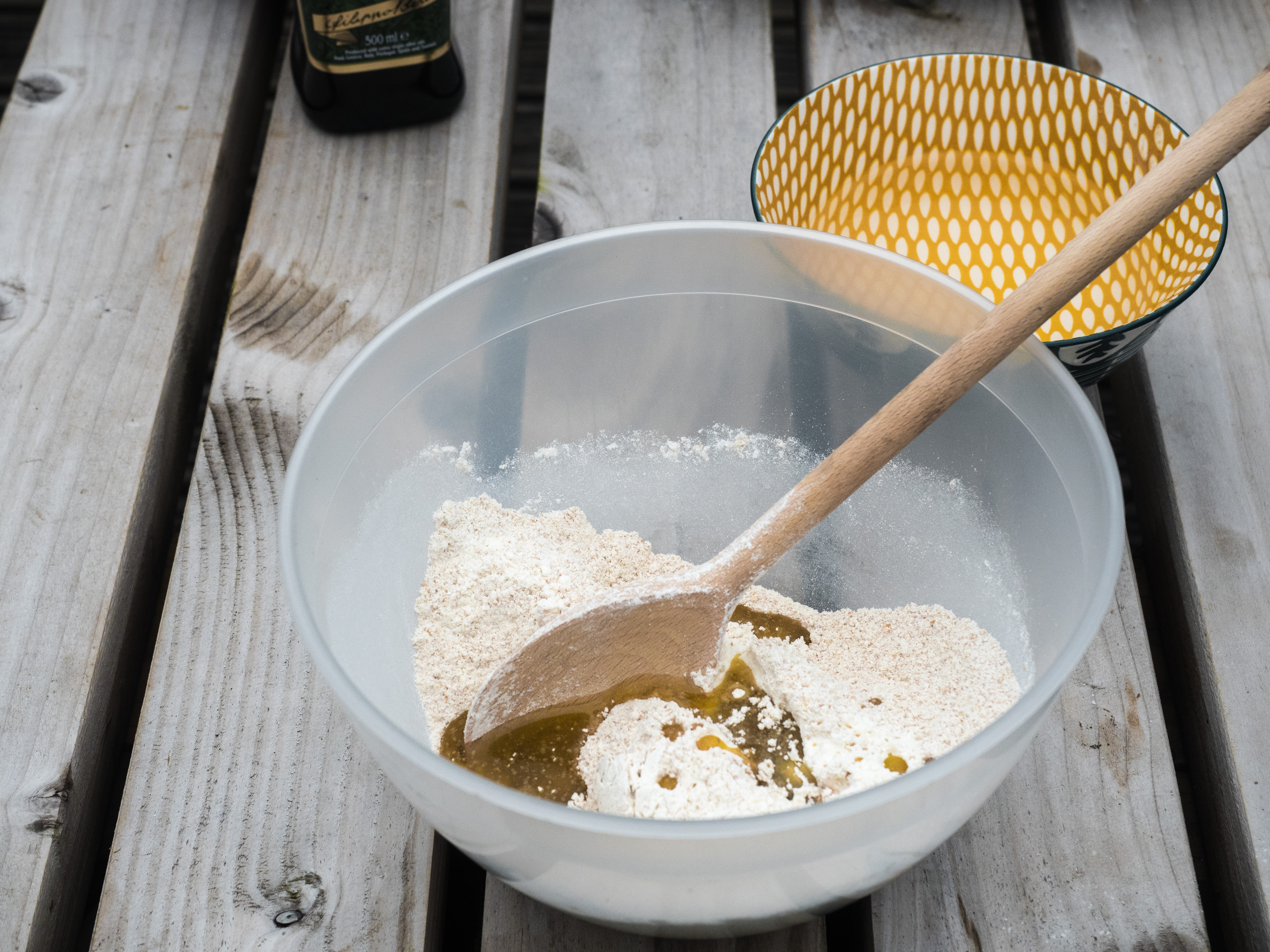
- Slowly add the water to the bowl while stirring constantly. You’re aiming for a consistency where the dough forms one smooth ball, but isn’t so wet that it becomes sticky. If you do add too much water, just add one Tbsp of flour at a time to get it back to the right consistency.
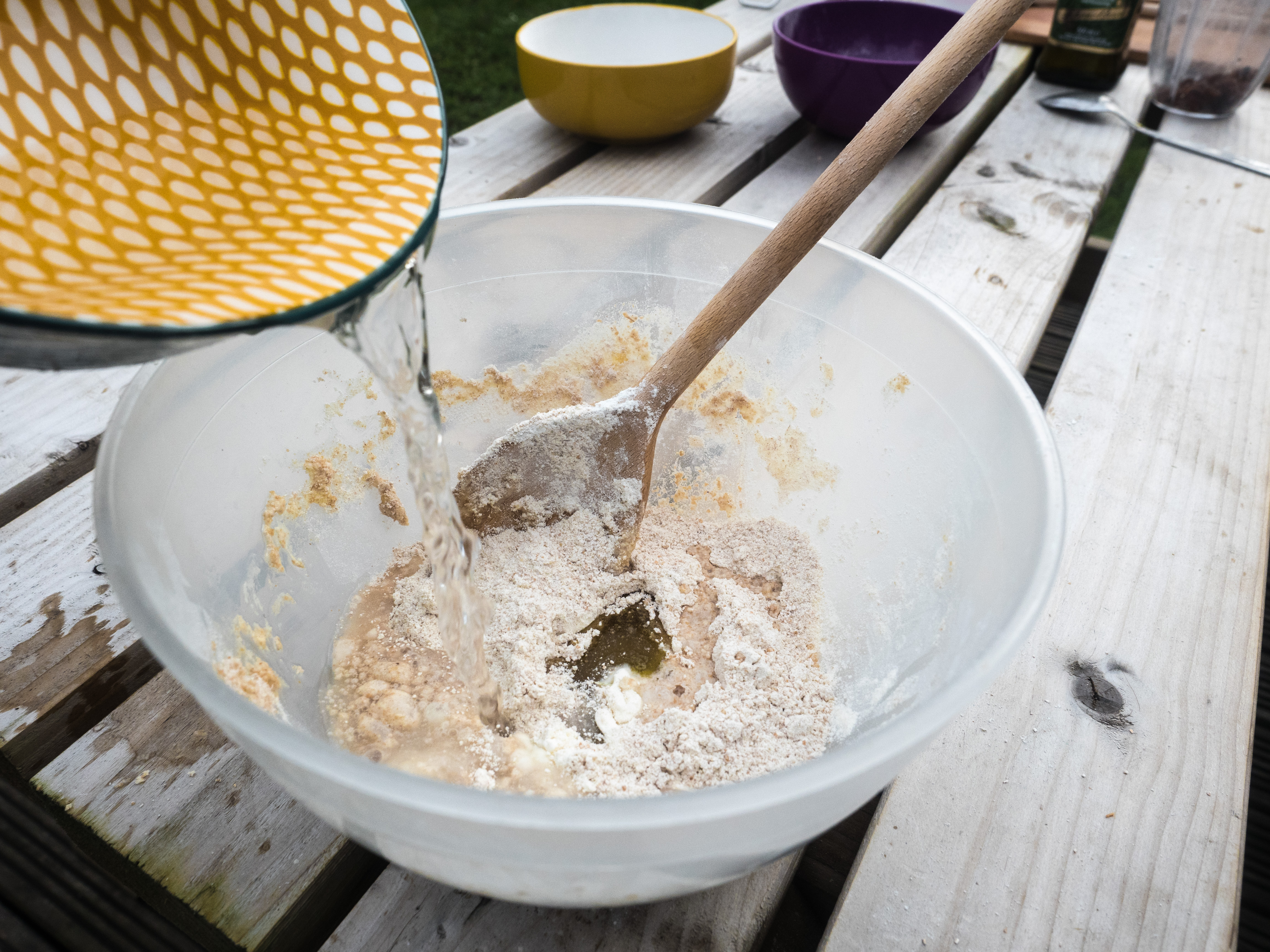
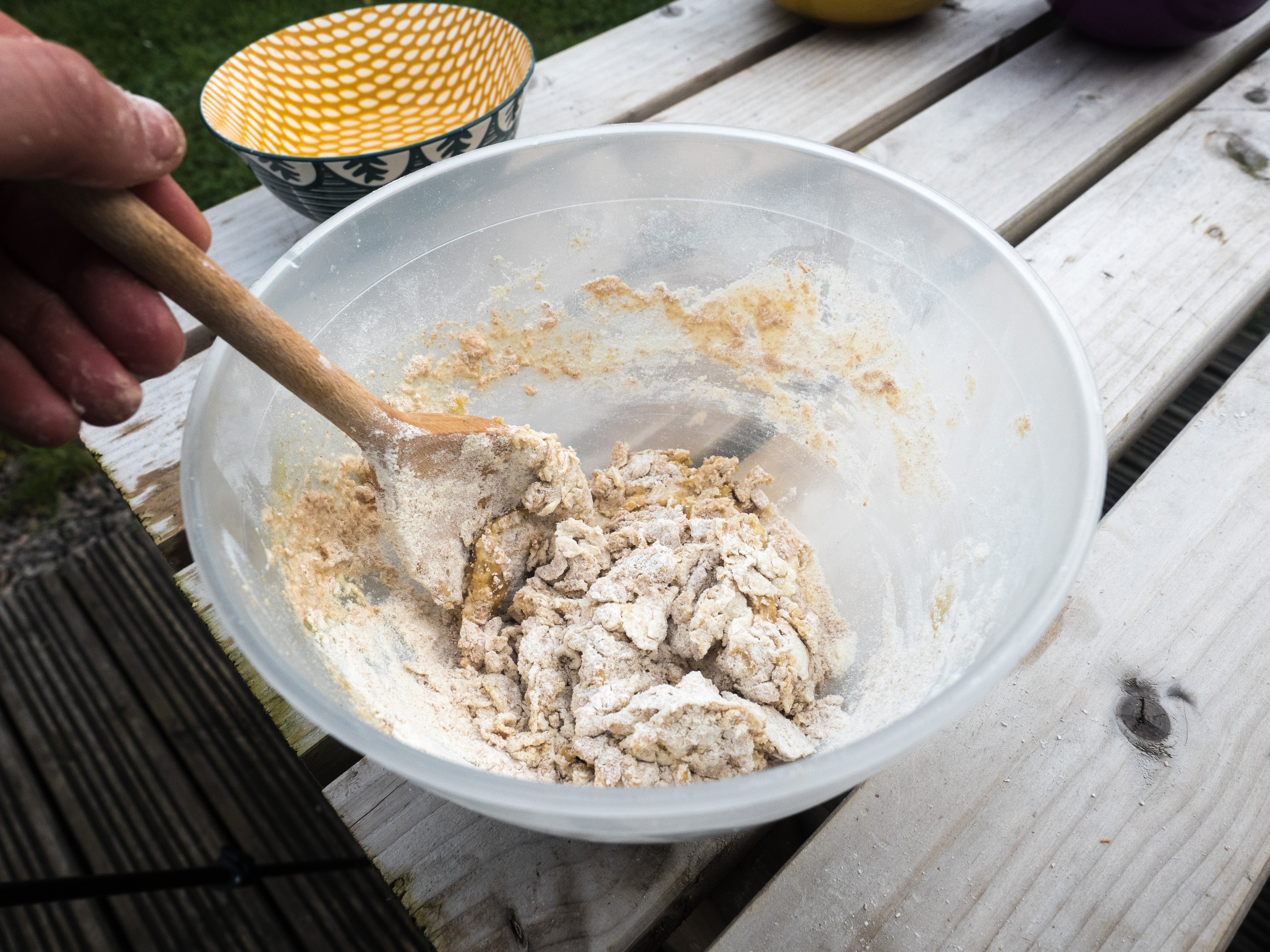
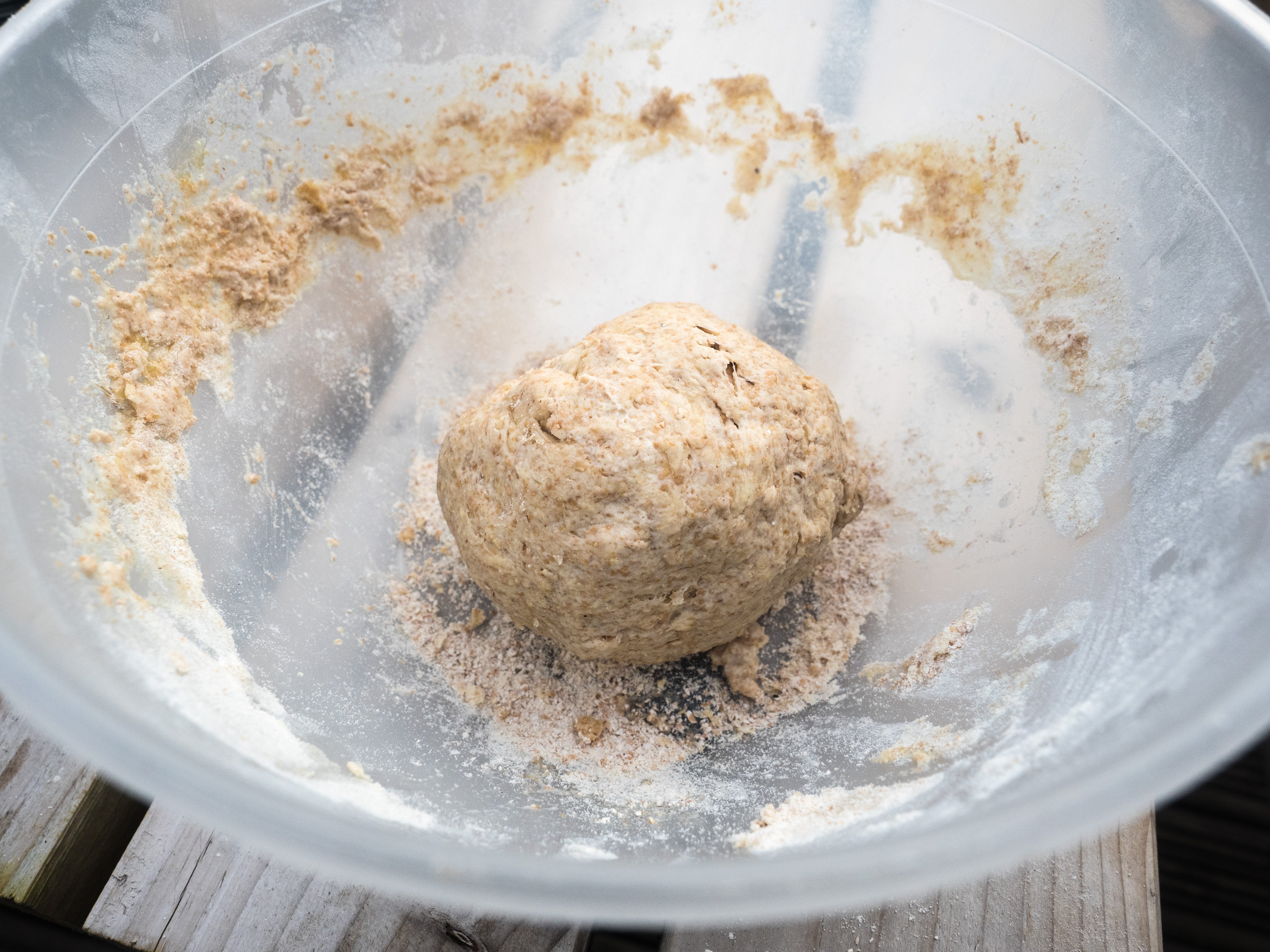
- Let the dough hydrate for 20 minutes or so, and this time can be spent either getting the fire ready to cook on or preparing other food.
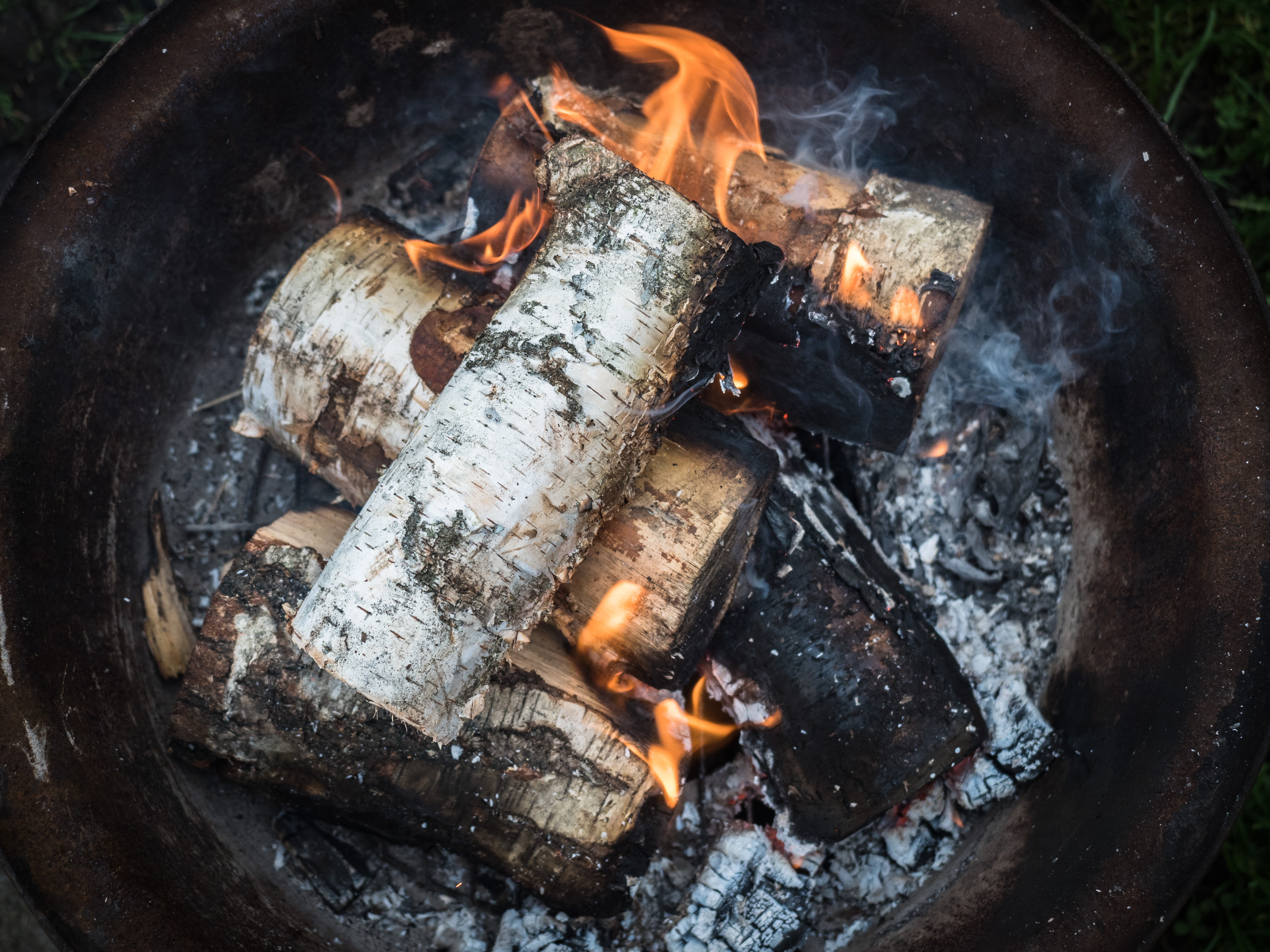
- Split the dough into four balls, roll them between floured hands and then press them into a burger shape.
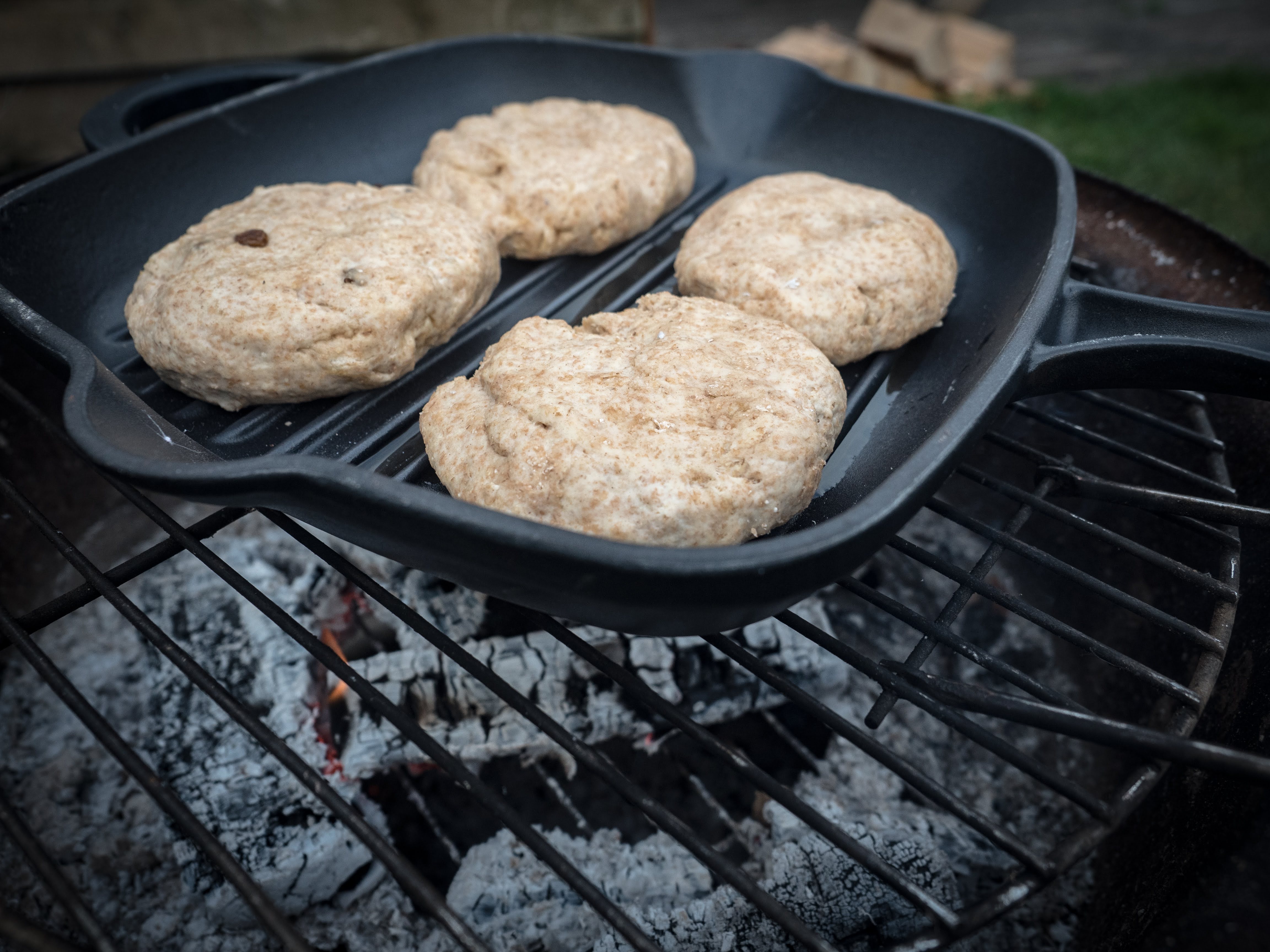
- Use oven mitts to handle the pan on the fire. Put one Tbsp of butter or oil in the pan and let it coat the surface. When the pan is hot, place the bannocks well apart from each other to avoid them sticking. Cook for around 10 minutes on each side, but lift them regularly to check for burning. If they start to burn, either move the pan to a cooler part of the fire or flip the bannock.


Love Campfire Cooking?
Do you love Campfire cooking? We've got lots more recipes for you to try!

